Welcome to a practical guide on earthquake strengthening in NZ, where protecting your home or building isn’t just a legal responsibility, it’s a smart way to keep your family, tenants, or business safe. In a country like New Zealand, where earthquakes are part of everyday life, understanding how to strengthen your property can save lives and avoid major damage. Whether you’re a homeowner, landlord, or building manager, this article will walk you through what earthquake strengthening means, why it’s important, who it applies to, and how to get started. You’ll get clear, jargon-free advice designed for real people, not engineers, so you can take action with confidence.
Earthquake strengthening in NZ involves upgrading buildings to better withstand seismic activity. It’s especially important for older structures and those classified as earthquake-prone. Strengthening methods include steel bracing, foundation bolting, and shear wall installation. In New Zealand, property owners may be legally required to strengthen their buildings to meet safety standards set by local councils.
Table of Contents
What Is Earthquake Strengthening?
Earthquake strengthening is the process of upgrading a building to make it safer and more stable during an earthquake. In simple terms, it’s about reinforcing parts of a structure, like walls, floors, and foundations, so that they can better resist shaking and movement caused by seismic activity. In a country like New Zealand, where earthquakes are part of life, this isn’t just a safety measure, it’s often a legal requirement.
Understanding The Difference Between Retrofitting And Strengthening
These two terms often come up together, but they don’t always mean the same thing. “Earthquake strengthening” is a broad term that refers to improving a building’s ability to withstand earthquakes. “Retrofitting,” on the other hand, usually means adding new features or systems to an older building that wasn’t originally built to modern seismic standards.
Think of retrofitting as a type of strengthening. For example, adding steel braces to support walls in an old brick building is a retrofit, and it also strengthens the structure. Not all strengthening is retrofitting, though. If you’re enhancing a relatively new building to meet even higher safety standards, that might count as strengthening but not retrofitting.
Common Earthquake Strengthening Examples In Homes And Commercial Buildings
In residential homes, earthquake strengthening might include:
- Bolting the timber framing to the foundation to stop it from sliding
- Reinforcing chimneys or removing heavy brick elements
- Adding brackets to secure water heaters or internal walls
In commercial buildings, common upgrades include:
- Installing steel frames or braces to support large walls
- Strengthening concrete columns and beams with fiber-reinforced wraps
- Reinforcing parapets and facades to prevent them from falling during a quake
Each building is different, so strengthening solutions are tailored based on the structure’s age, materials, location, and use. For older buildings in central Wellington, for example, strengthening may involve major structural work. For a modern home in Christchurch, it may be as simple as foundation anchoring and securing utilities.
Property owners shouldn’t wait for cracks or council notices. A professional seismic assessment is often the first step to understanding what, if anything, needs to be done. It gives you peace of mind, helps you plan, and in many cases, increases the long-term value and safety of your property.
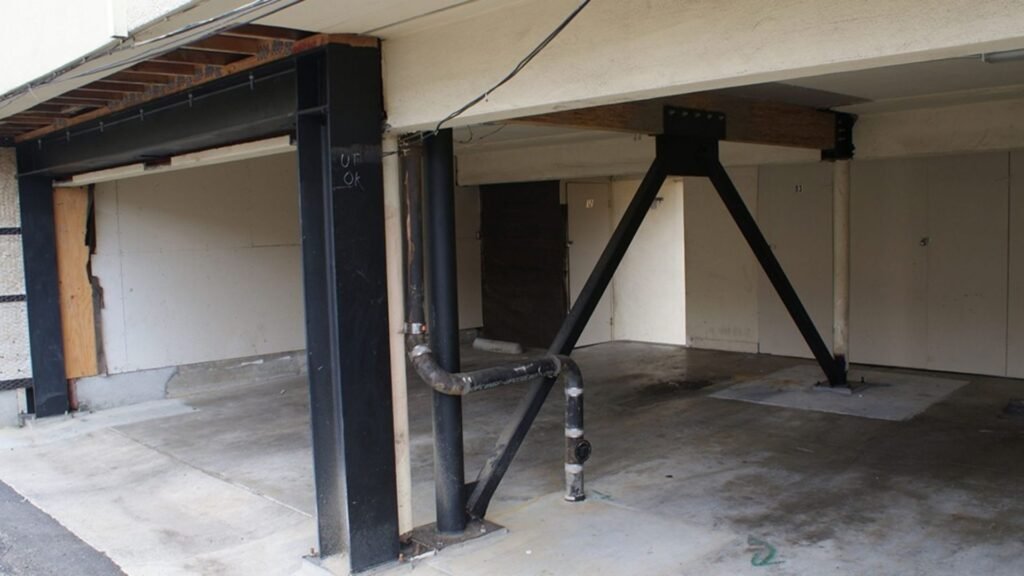
Why Earthquake Strengthening Matters In New Zealand
New Zealand’s Seismic Risk Is Real And Ongoing
New Zealand sits on the boundary between the Pacific and Australian tectonic plates, making it one of the most earthquake-prone countries in the world. Earthquakes aren’t rare events here, they’re part of everyday life. The country experiences thousands of tremors each year, and while most are minor, some can be devastating.
The 2011 Christchurch earthquake is a clear reminder of the risks. It caused 185 deaths, widespread building damage, and billions in economic losses. Older unreinforced buildings suffered the most, highlighting the urgent need for earthquake strengthening. The Kaikōura earthquake in 2016 reinforced this again, damaging key infrastructure and buildings as far away as Wellington.
These aren’t just historical events. They show what’s possible, and why preparation matters.
Legal, Safety, And Emotional Reasons To Take Action
The legal requirements around earthquake-prone buildings are clear. Under the Building (Earthquake-prone Buildings) Amendment Act, councils identify risky structures, and building owners are given specific deadlines to bring them up to code. Ignoring these notices can result in fines or restrictions on building use.
But beyond the law, it’s about safety. Earthquake strengthening saves lives. Strengthened buildings are less likely to collapse during a quake, protecting those inside and nearby. For property owners, taking action shows responsibility, not just to tenants or customers, but to your community.
There’s also an emotional side. Living or working in a building that feels unsafe creates stress. People want to feel secure in their homes, schools, or workplaces. Earthquake strengthening removes that uncertainty and replaces it with peace of mind.
Strengthening Brings Peace Of Mind To Everyone Involved
For homeowners, it means protecting your family and your biggest financial investment. For landlords, it’s about fulfilling your duty of care and avoiding legal trouble. For business owners, it’s about keeping your doors open after a quake and ensuring your staff and customers are safe.
Strengthened buildings are also easier to insure, attract better tenants, and hold more value in the property market. In many cases, earthquake strengthening isn’t just a cost, it’s a long-term investment that pays off in safety, stability, and security.
Whether you’re motivated by compliance, safety, or simply doing the right thing, strengthening your building is a smart move in a country where earthquakes aren’t a matter of if, but when.
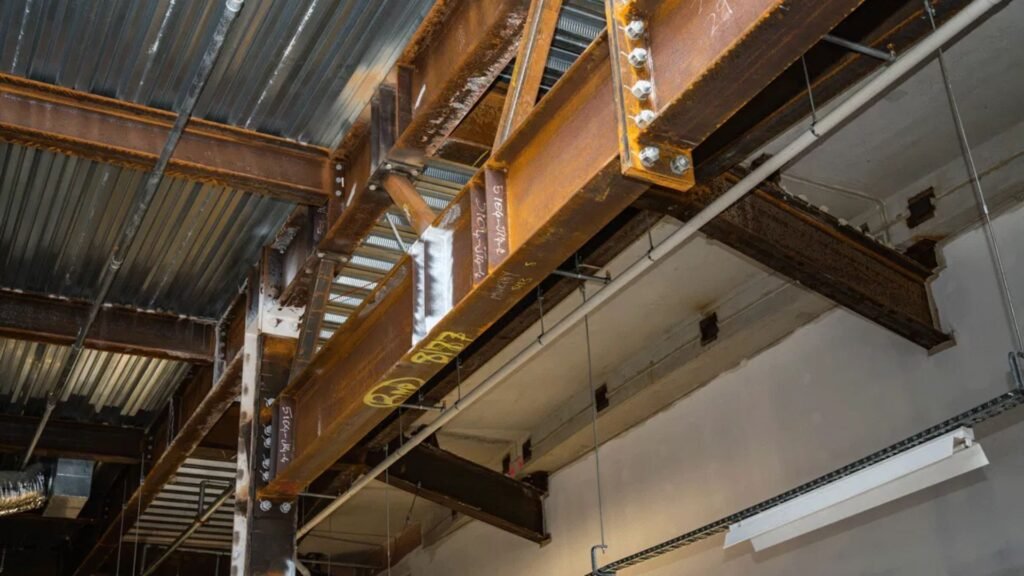
Who Needs To Strengthen Their Property?
Overview Of High-Risk Categories
Not every building in New Zealand needs earthquake strengthening, but certain types fall into high-risk categories. If your property matches any of the points below, it’s worth getting a seismic assessment from a qualified engineer.
Older Buildings (Pre-1976)
Properties built before 1976 are more likely to be at risk during earthquakes. This is because the New Zealand building code was updated significantly after major earthquakes to include stronger safety requirements. If your building was constructed before these changes, it may lack the structural reinforcements modern buildings have by default.
Unreinforced Masonry Structures
Buildings made with unreinforced masonry, such as brick, stone, or concrete block without internal steel supports, are highly vulnerable. They can crumble or collapse even in moderate seismic events. These structures are especially common in older commercial buildings and heritage sites, making them a priority for strengthening.
Commercial Property Owners
If you own a commercial building, especially one with public access, you have a legal duty to protect occupants. This includes shops, offices, hotels, and buildings with multiple tenancies. Many councils across New Zealand actively monitor commercial properties and may issue notices if a building is classified as earthquake-prone.
What The Building Act And Local Councils Say
Under the Building Act 2004, councils are responsible for identifying earthquake-prone buildings in their area. Once a property is classified as earthquake-prone, the council will notify the owner and set a deadline for completing strengthening work. The timeframe depends on the building’s location and how it’s used, typically 7.5 years in high-risk seismic zones and up to 15 years in lower-risk areas.
The law applies differently to commercial and residential properties. While most single-family homes aren’t subject to the same legal requirements, buildings used for public access or with multiple residential units may still need to comply.
Councils also maintain public registers of earthquake-prone buildings. If your property is listed, buyers, tenants, and insurers will be able to see its status, so ignoring it could impact your ability to lease or sell the building.
What Happens If You Delay Or Ignore It?
Delaying or ignoring required strengthening work can have serious consequences. First, there’s the legal side. If you miss the council’s deadline, they may issue fines, restrict access to the building, or take enforcement action. Your building could be classified as non-compliant, and you may face difficulty renewing insurance or securing financing.
Second, there’s the human risk. Without proper strengthening, buildings are more likely to collapse during an earthquake, endangering anyone inside. Even if no one is hurt, the cost of repairs after a quake can far exceed the cost of proactive strengthening.
Lastly, non-compliance can hurt the property’s value. Buyers are less likely to invest in a risky building. Tenants may also avoid renting space in an unstrengthened structure, especially in earthquake-prone regions like Wellington or Christchurch.
If you’re unsure whether your property falls under these rules, it’s smart to contact your local council or a structural engineer. A simple assessment today could prevent major problems tomorrow.
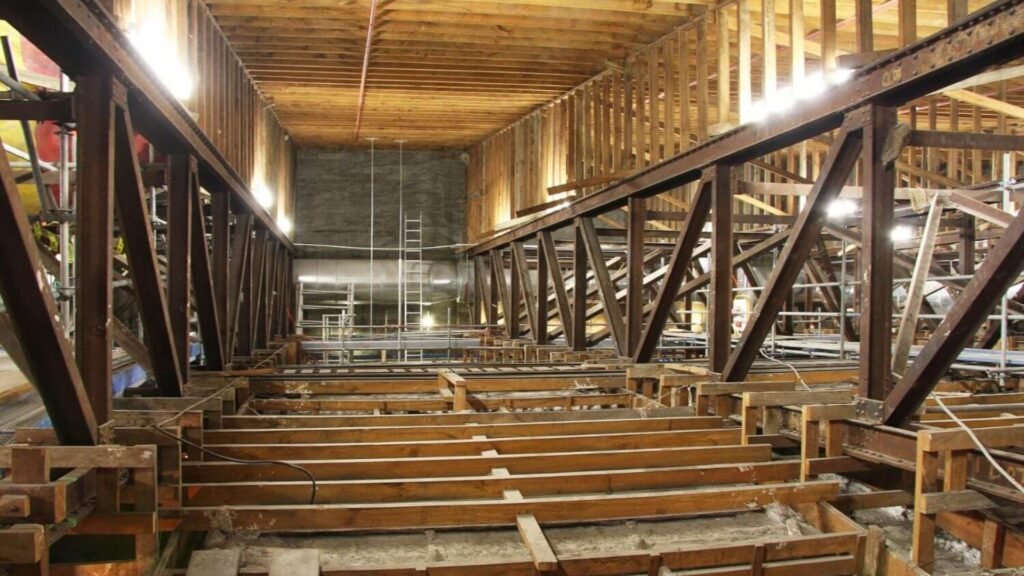
Signs Your Building May Need Strengthening
Not every building in New Zealand is earthquake-ready, especially older structures built before modern codes. But how do you know if your property could be at risk? There are visible signs you can watch for, clues that might suggest your building needs structural attention. Whether you’re a homeowner, landlord, or commercial property manager, catching these early could save you from major problems down the road.
Visual Red Flags
You don’t need to be an expert to notice when something seems off. These are some of the most common warning signs that may indicate your building needs earthquake strengthening.
Cracked Brickwork
If you see cracks running through the brick or masonry walls, especially around corners, windows, or door frames, it might be more than just cosmetic damage. Cracks can be a sign the structure has shifted, which weakens the building’s ability to handle seismic pressure.
Sagging Floors
Uneven or sloping floors often point to problems with the foundation or internal support beams. Over time, buildings settle, but excessive sagging could signal deeper structural issues that affect earthquake resistance.
Loose Facades
If parts of your exterior, like cladding, decorative pieces, or signage, look like they’re separating or pulling away, that’s a major concern. Loose facades are hazardous during an earthquake and may fall, injuring people or causing further property damage.
These red flags don’t always mean your building is unsafe right now, but they suggest that a closer look is needed.
When To Bring In An Engineer Or Building Inspector
If you’ve noticed any of the signs above, don’t guess, get a professional opinion. A structural engineer or a qualified building inspector can carry out a detailed seismic assessment. They’ll examine the building’s materials, layout, and overall condition to determine whether strengthening is needed.
Here’s when it’s a good idea to call in a pro:
- After you notice visible damage or cracking
- When purchasing an older property
- If your building was constructed before 1976
- After a nearby earthquake, even if your property wasn’t damaged
- If you’re planning renovations or adding a second story
An assessment gives you peace of mind and helps you make informed decisions. If strengthening is needed, your engineer will also recommend the best approach based on your specific building type.
Being proactive protects more than your property, it safeguards the people who live, work, or visit there.
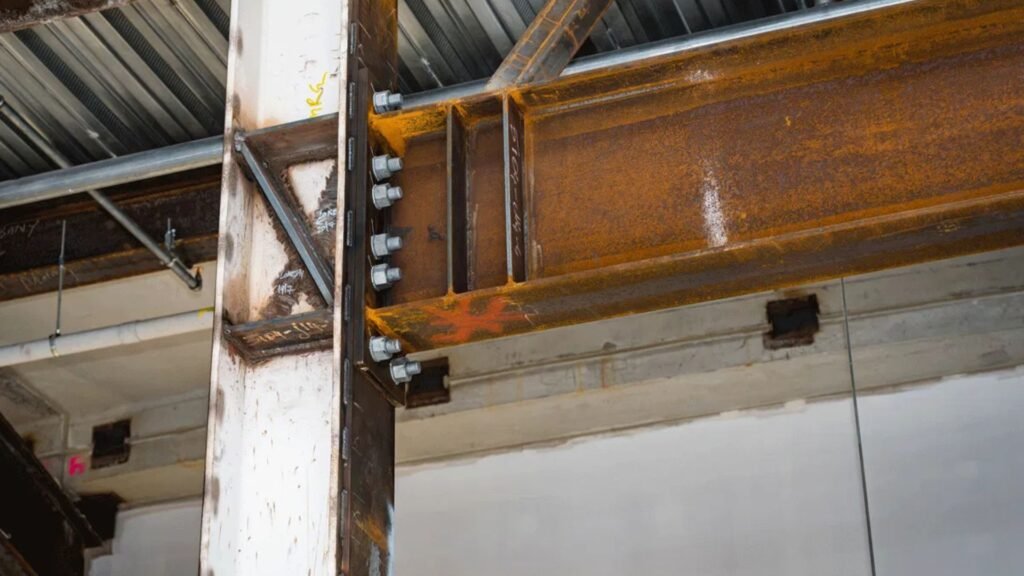
Earthquake-Prone Buildings: What The Law Requires
Overview Of NZ Earthquake-Prone Building Legislation
In New Zealand, earthquake-prone building legislation exists to protect lives and reduce damage during seismic events. The main law governing this is the Building (Earthquake-prone Buildings) Amendment Act 2016, which applies across all regions with guidelines issued by MBIE (Ministry of Business, Innovation and Employment). It outlines how local councils must identify, assess, and manage buildings that pose a seismic risk.
A building is considered earthquake-prone if it is likely to collapse in a moderate earthquake, causing injury, death, or damage to other property. This typically affects unreinforced masonry buildings and structures built before 1976, especially in areas with higher seismic risk like Wellington, Christchurch, and parts of the North Island.
This legislation applies to:
- Commercial buildings
- Multi-storey residential buildings
- Public use buildings like halls and churches
If a building is deemed earthquake-prone, it must be either strengthened or demolished within a set timeframe.
Timeframes And Compliance Requirements
The compliance timeframe depends on the building’s location and seismic risk zone. New Zealand is divided into three zones:
- High seismic risk areas: 7.5 years to complete strengthening after receiving a notice.
- Medium risk areas: 12.5 years to comply.
- Low risk areas: 25 years to meet requirements.
Before that, property owners must:
- Obtain a seismic assessment from a qualified engineer.
- Submit this to the local council.
- Apply for a building consent before making structural changes.
If the building is listed as heritage or has special features, owners may be eligible for extensions or alternative strengthening methods, but approval from Heritage New Zealand may be required.
What Councils Require From Property Owners
Once a building is flagged, the local council issues an Earthquake-Prone Building (EPB) notice. This notice must be:
- Displayed prominently on the property.
- Followed by an engineering assessment and remediation plan.
- Submitted within the timeframe outlined in the notice.
Councils may also:
- List the building on a public EPB register.
- Monitor compliance through inspections or documentation requests.
- Issue follow-up notices if no action is taken.
Some councils offer support services or guidance, but the responsibility still lies with the property owner to ensure all requirements are met.
Penalties For Non-Compliance
Failing to meet legal obligations can lead to serious consequences. Penalties include:
- Fines of up to $200,000 for non-compliance with a seismic upgrade notice.
- Legal orders requiring work to be done, regardless of consent.
- Increased liability in case of damage or injury during an earthquake.
- Insurance complications or outright denial of claims.
In worst cases, councils may take action to close or demolish unsafe buildings.
Acting early not only helps avoid these penalties but also ensures better safety for tenants, staff, or visitors. Property owners who proactively strengthen their buildings are more likely to secure insurance, attract tenants, and maintain or increase property value.
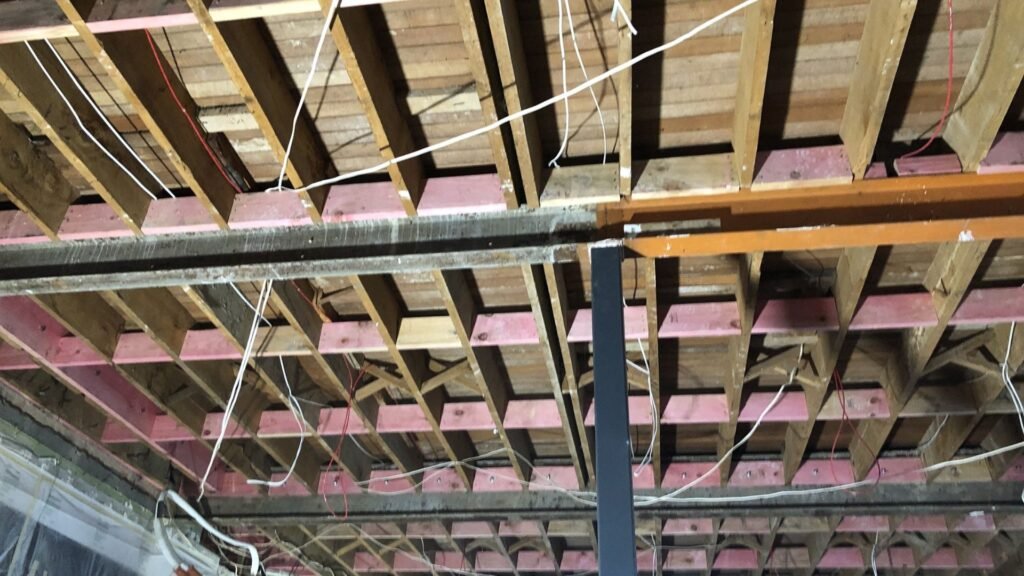
Earthquake Strengthening Methods Explained
Understanding the different ways to strengthen a building can help you make informed decisions that protect both people and property. In New Zealand, where earthquakes are a regular concern, using the right method for your building type is crucial. Below, we break down the most common earthquake strengthening methods and explain how they work, when to use them, and what to expect during the process.
Steel Bracing
Steel bracing is one of the most common and effective methods used in both residential and commercial buildings. It involves installing steel frames or cross-bracing inside walls to add rigidity and resist side-to-side motion during an earthquake.
This method is ideal for buildings with large open interior spaces or older timber frames that lack lateral strength. It’s often used in multi-storey structures or commercial properties where added strength doesn’t interfere with the layout.
Steel bracing is durable, low-maintenance, and usually allows for minimal disruption to daily use, depending on the building’s layout.
Foundation Bolting
Foundation bolting connects a wooden structure to its concrete foundation using steel bolts. Many older homes in New Zealand were built without these connections, making them vulnerable during seismic shifts.
This method is usually applied to timber-framed houses, especially those built before the 1970s. It’s relatively quick and cost-effective, and it can often be done without vacating the property.
A contractor will drill holes through the sill plate and concrete foundation, install anchor bolts, and fasten them with washers and nuts to prevent the structure from sliding off during shaking.
Shear Walls
Shear walls are vertical walls, often made of reinforced concrete or plywood, that are designed to absorb and distribute earthquake forces. They resist horizontal forces that can cause walls to tilt or collapse.
These are especially useful in taller buildings or homes with open-plan designs that lack structural support along wide spans. Shear walls are often built into the center or perimeter of a structure to form a strong, stable core.
They require careful planning and may involve redesigning certain interior spaces, but they offer a high level of protection and are considered a permanent, long-term solution.
Fibre-Reinforced Polymers
Fibre-reinforced polymers (FRPs) are strong composite materials made from carbon or glass fibers and a resin matrix. They are lightweight, flexible, and extremely strong, perfect for strengthening walls, beams, or columns without adding bulk.
FRPs are often used in heritage buildings or places where visible changes to the structure must be minimal. They are applied like fabric to surfaces, then hardened with resins to add strength and flexibility.
This method is non-invasive and ideal for preserving the appearance of older buildings while still improving their seismic performance.
Which Method Suits Which Type Of Structure
Choosing the right strengthening method depends on several factors.
- Age of the building: Older buildings may need foundation bolting and steel bracing, while newer structures might only need minor adjustments.
- Material type: Timber frames respond well to bolting and bracing, while concrete buildings benefit from shear walls or FRPs.
- Building use: Commercial buildings often need robust solutions like steel bracing or shear walls, while residential homes might only need partial retrofitting.
- Local council requirements: Some councils may specify acceptable methods based on the building’s classification and risk level.
A professional engineer will assess your building’s weaknesses and recommend a method, or combination of methods, that fits your structure and budget.
What A Typical Process Looks Like From Assessment To Completion
The earthquake strengthening journey usually starts with a seismic assessment. A licensed structural engineer will inspect your property, review plans, and identify areas that need reinforcement.
Next comes the design phase, where recommended solutions are drawn up and submitted for council approval. This includes outlining materials, costs, and expected timelines.
Once approved, work begins. Contractors will carry out the upgrades in phases, depending on access, safety, and whether the building will remain occupied during the process.
After installation, final inspections and sign-offs are completed to ensure the work meets both safety standards and council requirements.
Depending on the complexity, the entire process can take anywhere from a few weeks for small residential projects to several months for large commercial buildings.
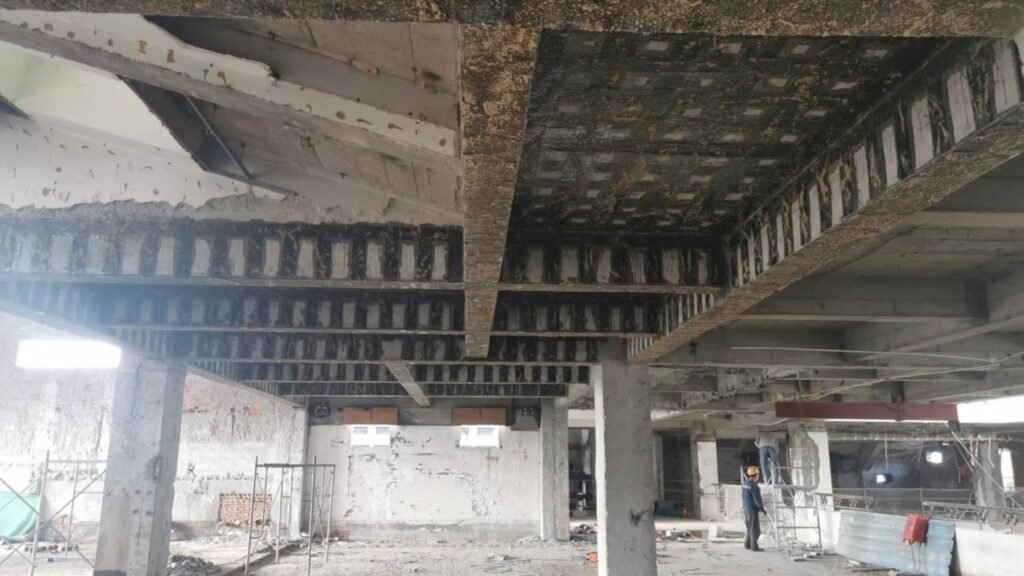
How Much Does It Cost?
Understanding the cost of earthquake strengthening in New Zealand is one of the most common concerns for property owners. Whether you’re managing a small home or an older commercial building, the price can vary widely based on several factors. While there’s no flat rate, knowing what to expect can help you budget smartly and avoid surprises.
Cost Ranges Based On Property Type And Size
The type and size of your property play a major role in determining the cost. Here’s a general idea:
- Residential homes: Strengthening a typical single-storey timber-framed house can range from $5,000 to $30,000, depending on the level of work needed.
- Multi-storey buildings: Two-storey homes or apartments may cost between $30,000 to $80,000 or more, especially if the foundation or framing needs major updates.
- Commercial properties: Earthquake strengthening for commercial buildings, especially those built before 1976, can range from $100,000 to several hundred thousand dollars. These buildings often require more complex structural upgrades and must meet stricter legal standards.
Keep in mind, these are only ballpark figures. Every property is different, and exact costs depend on engineering reports, design, and how accessible your structure is for construction work.
Factors That Affect Pricing
A number of elements can influence the final cost of your strengthening project.
- Building age and materials: Older buildings made of unreinforced brick or stone often need more intensive upgrades compared to newer timber-framed structures.
- Structural complexity: Buildings with unique architecture or non-standard layouts may require custom engineering, which adds to labour and material costs.
- Compliance needs: Properties classified as earthquake-prone under the Building Act must meet specific requirements, which can increase the scope and cost of the work.
- Accessibility: If your building is on a sloped site, has limited access, or requires temporary removal of cladding or roofing, the labour costs go up.
- Consultation and assessments: Seismic reports, structural engineering, and consent applications all carry additional fees.
- Location: Construction costs vary between regions. In larger cities like Auckland and Wellington, you might pay more due to higher labour and material rates.
Tips To Keep Costs Manageable
Earthquake strengthening doesn’t have to break the bank. Here are a few practical ways to control your budget:
- Look for funding support: Some local councils offer grants or low-interest loans for strengthening work, especially if your property is heritage-listed or located in a high-risk area.
- Time it right: Schedule the work during off-peak seasons when construction demand is lower. You may be able to negotiate better rates with contractors.
- Bundle with other repairs: If you’re already planning to renovate, combine those updates with earthquake strengthening. This reduces repeat labour and streamlines compliance work.
- Get multiple quotes: Don’t settle for the first quote you receive. Comparing at least three different providers gives you a clearer idea of the market rate and scope of work.
- Work with experienced professionals: Choose qualified engineers and builders who are familiar with NZ building codes. They can help avoid costly mistakes and unnecessary extras.
Investing in earthquake strengthening can feel like a big step, but it adds real safety, peace of mind, and long-term value to your property. With the right planning and guidance, you can keep costs under control and meet your legal responsibilities with confidence.
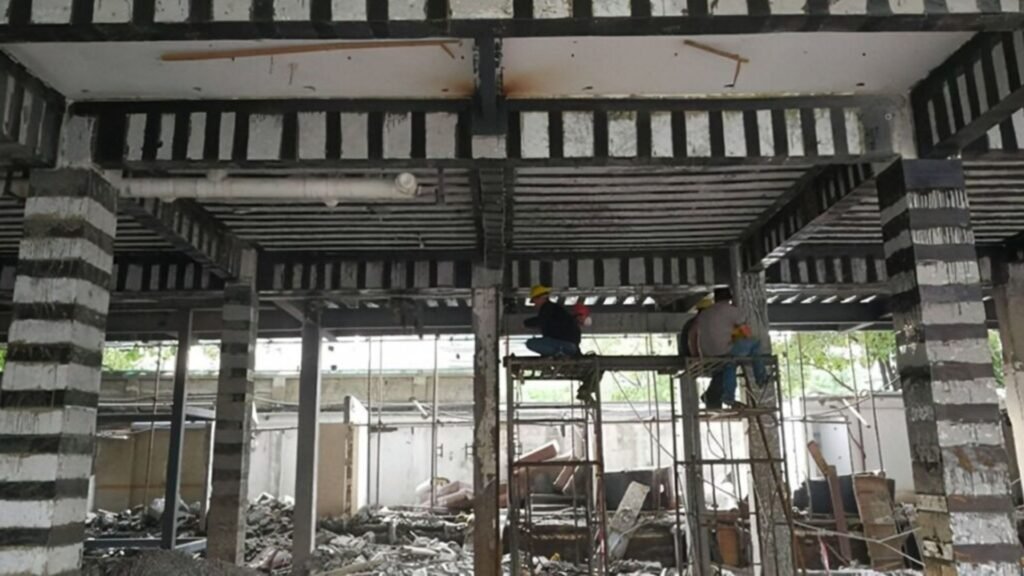
How Long Does Strengthening Take?
What To Expect During The Process
Earthquake strengthening isn’t just about construction, it’s a step-by-step process that starts well before any tools come out. First, you’ll need to book a professional seismic assessment. This is usually done by a structural engineer who checks the current condition of your building and identifies any weak points. They’ll then create a strengthening plan tailored to your structure and budget.
Once approved, the project moves to the planning and consent phase. Depending on your local council, getting building consent can take a few weeks or longer. After consent is granted, contractors schedule the work, source materials, and organize site access.
During the actual strengthening, you’ll see workers reinforcing foundations, adding steel braces, installing shear walls, or upgrading fixings. Expect some noise, dust, and movement, especially if the work involves concrete cutting or drilling. Clear communication from your contractor helps reduce surprises and delays. A good contractor will walk you through each stage and update you as things progress.
Typical Project Timelines
The time it takes to complete earthquake strengthening varies depending on several factors, building size, age, condition, and how extensive the work is. A simple residential project might take two to four weeks, especially if it’s limited to bracing walls or bolting the foundation. More complex retrofits, such as commercial buildings or heritage structures, can stretch out over several months.
Don’t forget that the total timeline includes more than just physical labor. You’ll need to account for assessments, planning, council approvals, and inspections. Delays can also happen if weather conditions change, if materials are on backorder, or if unexpected issues arise during the work, like discovering hidden structural damage.
To stay on track, work with a team that gives realistic estimates and keeps the project transparent from start to finish. Ask for a detailed schedule with milestones so you know what to expect week by week.
Will You Need To Vacate The Building?
This depends on the scope of the work and the structure of the building. For small upgrades, like reinforcing a few internal walls or securing ceiling fixtures, you might be able to stay in the building, especially in residential settings. Some contractors work in stages so you can occupy other areas of the home while they strengthen one section at a time.
But for larger or riskier jobs, such as foundation work, wall reconstruction, or commercial retrofits, it’s often safer to vacate. Business owners may need to temporarily close or relocate operations to avoid disruption. If the work involves essential systems like plumbing or electricity, moving out becomes unavoidable.
Before the project starts, your contractor should give you a clear plan that outlines when and where access will be restricted. If temporary relocation is needed, plan early and consider short-term accommodation options or workspace alternatives. The key is open communication, knowing what’s coming helps you stay prepared and avoid stress.
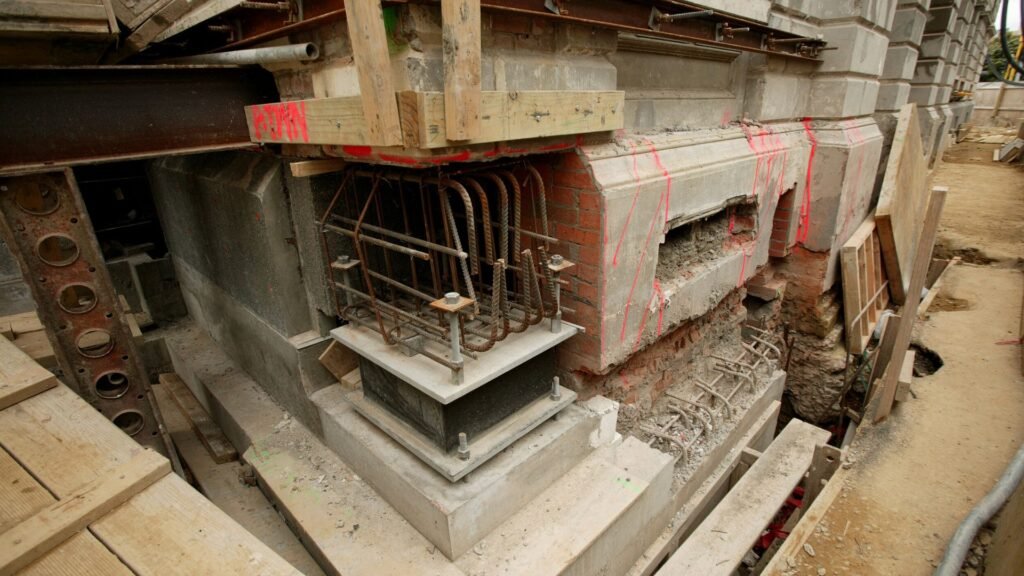
Funding, Loans, And Support Options In NZ
Earthquake strengthening can be a big financial commitment, especially for older properties that need major upgrades. The good news is that in New Zealand, there are various support options available to help reduce the burden. From government assistance to smart budgeting strategies, here’s what you need to know if you’re planning earthquake strengthening work.
Government Or Local Council Support (If Available)
Some local councils in New Zealand offer limited funding or financial incentives to help property owners comply with earthquake-prone building laws. These programs are more common in areas with a high number of older buildings, such as Wellington, Christchurch, and Dunedin.
Support may include:
- Low-interest loans
- Rates relief or deferment
- Grants for heritage-listed buildings
Each council has its own policy, so it’s worth contacting your local office to ask about funding opportunities or application deadlines. Keep in mind that these programs often have specific eligibility criteria.
Earthquake Commission (EQC) Role
The Earthquake Commission (EQC) plays a key role in helping homeowners recover from earthquake damage, but it does not fund earthquake strengthening projects directly.
Here’s how EQC helps:
- It provides natural disaster insurance for residential properties
- EQC coverage applies only if you have private home insurance with fire cover
- The policy covers damage after a quake, not upgrades before one
Still, understanding EQC policies is essential. If your home is strengthened properly, you may face fewer repair costs and insurance complications after a future quake.
Insurance Considerations
Insurance is another crucial piece of the puzzle. Some insurers may require a seismic assessment before providing cover, especially for older commercial properties. Others may offer better terms or lower premiums if a building has been strengthened.
Key tips:
- Notify your insurer before starting work
- Keep engineering reports and council documents on file
- Ask if strengthening work will affect your premium or excess
If you don’t disclose changes, you risk invalidating your policy. Being upfront ensures smoother claims processing in the event of damage.
How To Budget Smartly
Earthquake strengthening doesn’t have to break the bank. With proper planning, you can manage costs while still meeting legal and safety standards.
Here’s how to budget wisely:
- Get multiple quotes from licensed engineers and contractors
- Break the work into phases if your building allows it
- Schedule upgrades alongside other planned renovations to save on labour
- Track costs with a spreadsheet or budgeting tool
Also, consider setting aside a small contingency fund (around 10–15% of your total budget) to cover unexpected costs. Many strengthening projects uncover issues like rotting timber or outdated wiring, so it’s best to prepare.
Smart budgeting not only helps you stay on track, it also shows council officials, insurers, and potential buyers that you’ve taken strengthening seriously and done it the right way.
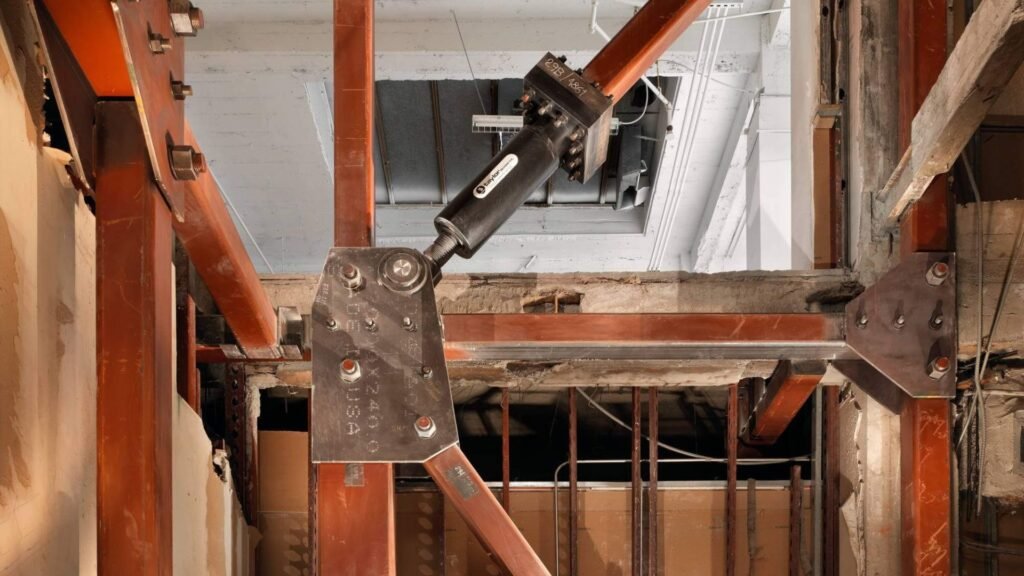
Choosing The Right Earthquake Strengthening Specialist
When it comes to earthquake strengthening in New Zealand, choosing the right specialist can make a major difference, not just in the quality of the work, but in your peace of mind. Whether you’re a homeowner or a commercial property owner, working with the wrong contractor or engineer can lead to delays, poor workmanship, or even legal trouble. Here’s how to make a confident, informed choice that keeps your building safe and compliant.
What To Look For In A Contractor Or Engineer
Start by checking if they have direct experience with seismic work. Not all builders or engineers are trained for earthquake-related upgrades. Look for professionals who:
- Specialize in structural engineering or earthquake retrofitting
- Have a track record of similar completed projects
- Can explain strengthening methods in plain language
- Are familiar with New Zealand’s Building Act and local council requirements
Check their reputation. Google reviews, client references, or case studies can help you assess their reliability. If possible, ask for examples of past projects and outcomes.
Questions To Ask Before Hiring
Before you sign anything, ask questions that reveal how they work and how well they understand your needs.
- Are you licensed and insured for this type of work?
- How many earthquake strengthening projects have you completed?
- Can you walk me through your process from assessment to completion?
- What kind of reporting or certification will I receive?
- How do you handle unexpected issues or structural surprises?
Their answers should be clear, honest, and based on real experience. If someone dodges a question or gives vague replies, take it as a red flag.
How To Compare Quotes
Don’t choose a contractor based on price alone. A lower quote might mean shortcuts or poor-quality materials. Instead, compare quotes by looking at:
- What’s included in the scope of work
- Materials and reinforcement methods
- Timeline and scheduling flexibility
- Permit and compliance costs
- Warranty or post-project support
Ask for a detailed breakdown, not just a single number. This helps you spot inflated costs or missing details. Make sure you’re comparing apples to apples when reviewing bids.
Importance Of Certification And Experience In NZ Regulations
Earthquake strengthening in NZ isn’t a DIY job. It must comply with strict laws and building codes. That’s why it’s essential to work with professionals who are:
- Chartered engineers or certified by Engineering New Zealand
- Registered with local councils or national building authorities
- Familiar with NZ Seismic Assessment Guidelines
- Up to date with changing laws for earthquake-prone buildings
Choosing a certified specialist helps you avoid future compliance issues. It also gives you legal proof that the work meets all safety and performance standards, something you’ll need when insuring, selling, or leasing the property.
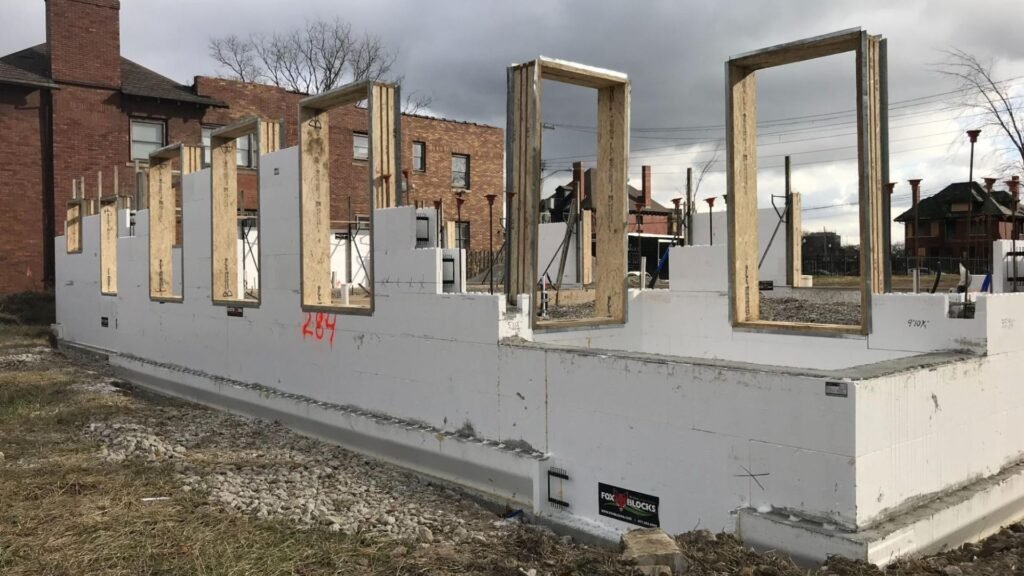
Real Stories: Lessons From Kiwi Property Owners
When it comes to earthquake strengthening in New Zealand, real-life experiences speak louder than technical guides or council regulations. Hearing from everyday Kiwis who’ve gone through the process offers relatable insights, and sometimes even a few surprises. Below are two real stories from property owners who took action to protect their buildings and what they learned along the way.
How A Christchurch Landlord Strengthened A Rental And Gained Peace Of Mind
Mike, a Christchurch-based property owner, owns a two-storey brick apartment complex built in the early 1970s. After receiving a notice from the local council identifying his building as earthquake-prone, he initially felt overwhelmed. He wasn’t sure where to start or how much it would cost.
He decided to get a detailed seismic assessment, which revealed the building was sitting at just 25% of the New Building Standard (NBS). He worked with a structural engineer and a trusted contractor to install steel bracing and reinforce the foundation. The entire project took three months and cost around $85,000.
While the investment was significant, Mike says it was worth it. His insurance premiums went down, he retained all his tenants during the work, and now the property sits at over 70% NBS. More importantly, he says he sleeps better knowing the building is safer.
- Key takeaway: Starting early and choosing the right experts helped reduce stress and avoid legal penalties. Mike also noted that communicating with tenants was critical for keeping everyone on board.
A Wellington Homeowner’s Experience With Retrofitting A Family Home
Sarah owns a classic wooden villa in Wellington, built in 1910. After the Kaikōura earthquake, she noticed minor cracks in the interior walls and decided to have her property checked. Although it wasn’t legally classified as earthquake-prone, her structural engineer pointed out areas that could fail in a strong quake.
She chose to retrofit her home by bolting the timber frame to the concrete foundation and adding plywood bracing in the walls. The total cost was under $30,000 and took six weeks. Sarah and her family stayed in the home during the work with minimal disruption.
The change may not be visible from the outside, but the benefits were immediate. Her home is now safer, her resale value has improved, and she qualified for a more favorable insurance policy.
- Key takeaway: Even if your home isn’t legally required to be strengthened, doing so voluntarily can pay off in terms of safety, long-term value, and insurance perks.
These stories show that earthquake strengthening isn’t just about ticking boxes, it’s about protecting people, preserving value, and making smart long-term decisions. Whether you own a commercial building or a family home, starting the process early and working with the right professionals can turn a daunting task into a rewarding investment.
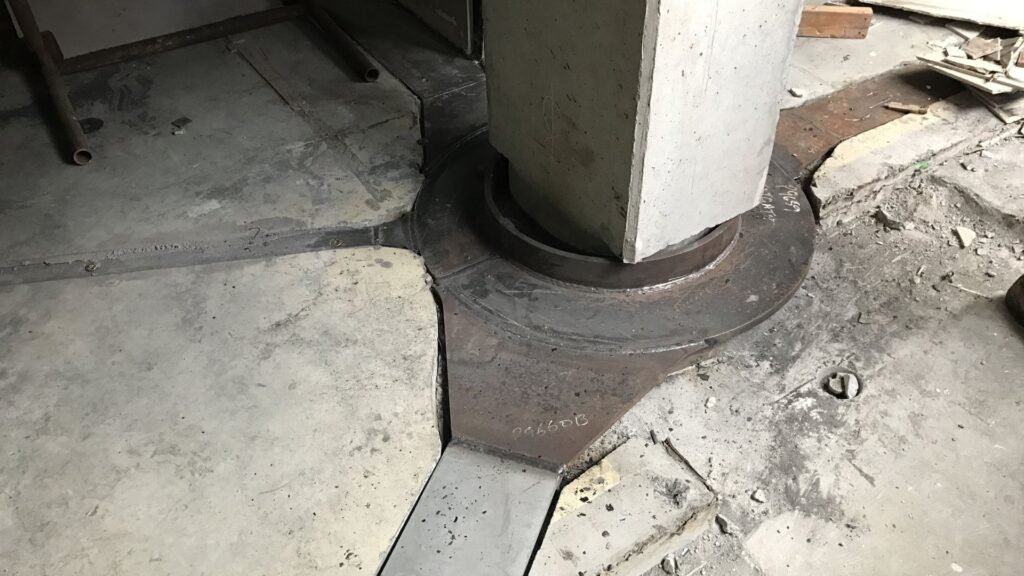
Earthquake Strengthening And Property Value
When it comes to property investment in New Zealand, safety is more than just a selling point, it’s a necessity. Earthquake strengthening plays a big role in how a property is valued, perceived, and maintained over time. Whether you’re a homeowner looking to sell or a buyer evaluating your options, understanding how strengthening affects property value can help you make smarter decisions.
Does It Increase Resale Value?
Yes, earthquake strengthening can increase resale value, especially in regions with known seismic risk. Buyers are more likely to invest in a property that’s already compliant with earthquake safety standards. Strengthened properties reduce the buyer’s future costs, eliminate the stress of upcoming council deadlines, and signal responsible ownership.
While the exact return on investment varies, properties that have completed required strengthening work tend to sell faster and closer to asking price. For commercial properties, tenants often prefer safer buildings, which improves occupancy rates and long-term income potential.
How Buyers View Strengthened Vs. Unstrengthened Buildings
Buyers are becoming more aware of the legal and safety implications of earthquake-prone properties. In most cases, unstrengthened buildings are seen as risky. They may come with hidden costs like engineering reports, council notices, and expensive upgrade requirements.
Strengthened buildings, on the other hand, offer peace of mind. They’re viewed as move-in ready and less likely to face future disruptions or insurance issues. This confidence often translates into stronger offers and fewer negotiations during the sale process.
In commercial real estate, earthquake compliance is even more critical. Businesses don’t want to lease space in a building that might require evacuation or structural repairs. So if you’ve already invested in strengthening, you’ll likely stand out in a crowded market.
Impact On Long-Term Maintenance And Insurance
One of the biggest hidden benefits of earthquake strengthening is how it affects your long-term costs. Strengthened buildings are typically more structurally sound, which means fewer repairs after an earthquake and lower ongoing maintenance bills.
Insurance companies also take note. Some providers may offer more competitive premiums, or refuse to insure unstrengthened buildings altogether. In high-risk areas, failing to strengthen your property could make it harder or more expensive to secure adequate coverage.
Earthquake strengthening isn’t just about meeting legal requirements, it’s about protecting your investment, reducing future risks, and increasing market appeal. Whether you plan to sell soon or stay long term, it’s a smart move that pays off on multiple fronts.
Earthquake strengthening doesn’t have to be overwhelming. Let’s make it simple. Visit our website and take the first step toward a safer building.

FAQs: About Earthquake Strengthening In NZ
What is earthquake strengthening?
Earthquake strengthening is the process of making a building more resistant to seismic activity. This often includes reinforcing foundations, adding structural bracing, or retrofitting older elements to meet modern safety standards.
Why is earthquake strengthening important in New Zealand?
New Zealand is prone to earthquakes due to its location on the Pacific Ring of Fire. Strengthening reduces the risk of injury, loss of life, and costly damage. It also helps buildings comply with national and local safety laws.
Who is required to strengthen their property?
Owners of earthquake-prone buildings, especially those built before 1976, are often required by law to carry out strengthening work. This includes many commercial buildings and some residential properties, depending on their structure and use.
How do I know if my building is earthquake-prone?
Local councils maintain registers of earthquake-prone buildings. You can also request a seismic assessment by a qualified structural engineer to understand your building’s status and any potential risks.
What methods are used for earthquake strengthening?
Common methods include foundation bolting, steel bracing, shear wall installation, and use of carbon fibre reinforcements. The right approach depends on the building’s design, materials, and condition.
How much does earthquake strengthening cost in NZ?
Costs vary widely depending on building size, age, and condition. Residential strengthening can start from a few thousand dollars, while commercial upgrades may cost tens or hundreds of thousands. Detailed assessments provide accurate pricing.
Will I need to move out during the strengthening work?
In some cases, yes, especially if the work affects load-bearing walls or utilities. For minor upgrades, you may be able to stay in the building with limited disruption. Always confirm this with your contractor before work begins.
Are there any financial support or funding options available?
Some local councils offer assistance or incentives for strengthening work. You may also explore bank loans, insurance options, or tax deductions depending on your situation. EQC may assist in some cases, but coverage varies.
Does strengthening increase my property’s value?
Yes. Strengthened properties are generally more attractive to buyers and insurers. It can also reduce insurance premiums and increase tenant confidence in commercial spaces.
How long does the strengthening process take?
Timelines depend on the scope of work. Small residential projects may take a few weeks, while larger commercial buildings could require several months. Planning, council approvals, and inspections can also add to the timeframe.
Conclusion
Taking early action on earthquake strengthening isn’t just about ticking a box for compliance, it’s about protecting the people and property that matter most. In a country like New Zealand, where seismic activity is a real part of life, reinforcing your building is a smart and responsible move that can prevent serious damage and even save lives. The longer you wait, the greater the risk, not just legally, but financially and personally. If you’re unsure where to start, check your local council’s website for building safety requirements, or get in touch with a registered structural engineer who can assess your property. Strengthening your building now means greater peace of mind down the road.







